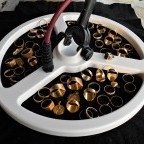Impulse AQ In Surf / 36 Psu Salinity
-
Similar Content
-
- 3 replies
- 459 views
-
- 61 replies
- 4,818 views
-
- 28 replies
- 2,371 views
-
- 58 replies
- 24,850 views
-
- 10 replies
- 4,927 views
-
- 10 replies
- 4,417 views
-
-


.thumb.jpg.d71314a45f3dc82bf75ac1b96e7e9201.jpg)






Recommended Posts
Create an account or sign in to comment
You need to be a member in order to leave a comment
Create an account
Sign up for a new account in our community. It's easy!
Register a new accountSign in
Already have an account? Sign in here.
Sign In Now